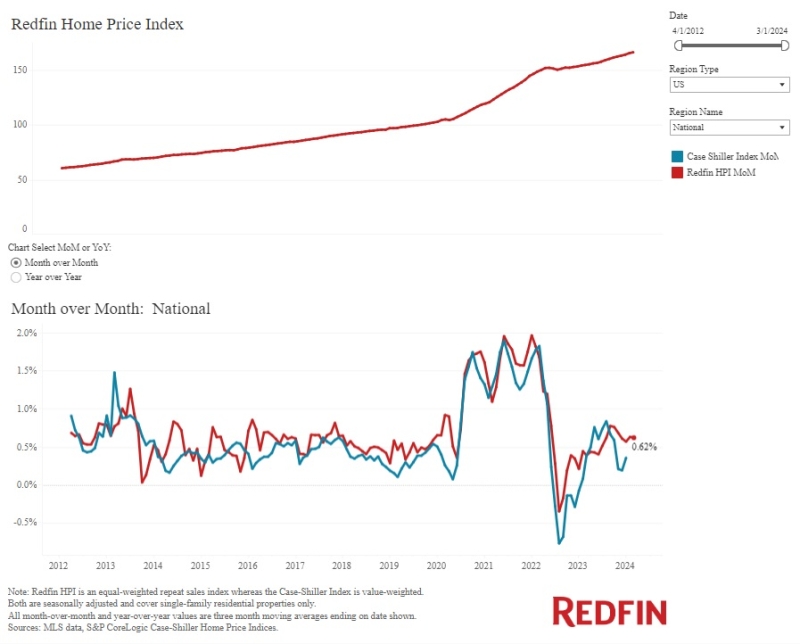Advertisement
Advantage Systems adds dashboard feature to AMB Accounting Software
ComplianceTech report: Sub-prime lending dominant among non-Hispanic Whites MortgagePress.comComplainceTech, HMDA, LendingPatterns, sub-prime loans
ComplianceTech, a provider of technology and business
intelligence for consumer lending institutions and government
agencies, has released a report indicating that the majority of
sub-prime-rate loans originated in 2006 were made to non-Hispanic
Whites and upper-income borrowers (conventional, 1st lien, one- to
four-family, owner-occupied, home purchase and refinance). The
findings are contrary to the way subprime-rate lending has been
portrayed. Frequent media portrayals and congressional dialogue
refer to subprime-rate lending as a minority and low-income issue.
Findings in the report are based on data submitted by lenders under
the Home Mortgage Disclosure Act (HMDA) analyzed with the
data-mining tool LendingPatterns.
The report concluded that a disproportionate share of loans made
to minorities and low-income borrowers were subprime-rate loans,
but the majority of subprime-rate loans were made to non-Hispanic
Whites and upper-income borrowers. Of the 1,917,809 subprime-rate
loans originated in 2006, non-Hispanic Whites had 70.82 percent of
the loans, and 56.23 percent of the subprime-rate loans.
Upper-income borrowers had the highest share of the subprime-rate
loans at 39.37 percent, followed by 27.55 percent for middle-income
borrowers and 20.99 percent for moderate-income borrowers. Contrary
to popular belief, low-income borrowers had only 149,173, or 7.57
percent, of 2006 subprime-rate loans. The report also concluded
that the majority of subprime-rate loans were originated in
predominately-White geographic regions (areas representing census
tracts less than 30 percent minority).
Compared to joint applicants, the report also found that single
men and single women received the highest share of 2006
subprime-rate loans. The frequency of subprime-rate loans for males
without co-applicants and females without co-applicants was almost
even at 32.60 percent and 32.21 percent, respectively. Together
single borrowers received 64.81 percent of the subprime-rate loans
originated in 2006.
For all racial and ethnic groups except Black, single men had
the highest share of subprime-rate loans; White, 35.67 percent,
Hispanic, 46.69 percent, Asian, 38.82 percent, Native American,
34.03 percent and Hawaiian, 32.44 percent, respectively. For Blacks
however, single women had the highest share of 2006 subprime-rate
loans at 42.10 percent followed by single Black men at 33.08
percent. According to Maurice Jourdain-Earl, co-founder and
managing director of ComplianceTech, this data could imply more
serious ramifications than previously considered, "These presumably
single borrowers do not have two income sources to support the
mortgage & and if these borrowers are single-head of households
experiencing trouble making their mortgage payments, what about the
children?
Jourdain-Earl expresses that the problem with portraying the
foreclosure crisis as a minority and low-income issue is that it
affects how solutions will be approached. "If it is believed that
subprime-rate loans were predominately made to Black, Hispanic or
low-income households, housing policy-makers might approach
solutions with biases about qualifications of those groups, such as
low education, bad credit and low-paying jobs, etc. There could be
a tendency to write-off the subprime lending debacle as a type of
affirmative action gone bad. We must acknowledge that the
foreclosure crisis affects broader and more demographically diverse
segments of society. This politically responsible approach will
likely change the tone, climate and context of how solutions are
crafted.
Jourdain-Earl also notes that "Not enough research and media
attention has been devoted to other causes of the subprime crisis
that might have race and ethnicity effects. Issues of steering,
weak underwriting, fraud and discrimination have not been
aggressively investigated. Despite the presence of federal
regulation and periodic examinations for Safety and Soundness,
Community Reinvestment Act and Fair Lending compliance, efforts to
uncover whether subprime-rate loans can be explained by legitimate
risk factors will be impaired if they are based on erroneous
assumptions about the demographic distribution of subprime-rate
loans.
He concludes, "To resolve the true issues, the subprime lending
meltdown must be addressed as a nationwide problem with aspects
that affect Whites as well as minorities, in suburban, rural and
urban communities.
For more information, visit www.compliancetech.com or
www.lendingpatterns.com.
About the author





